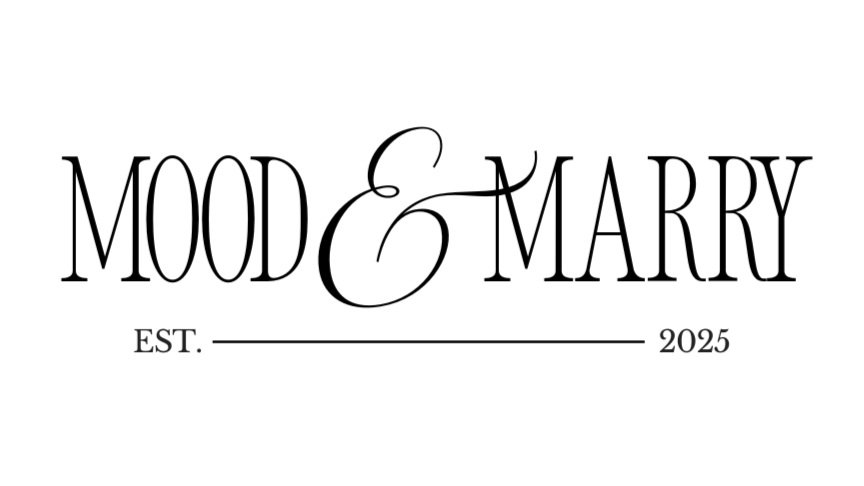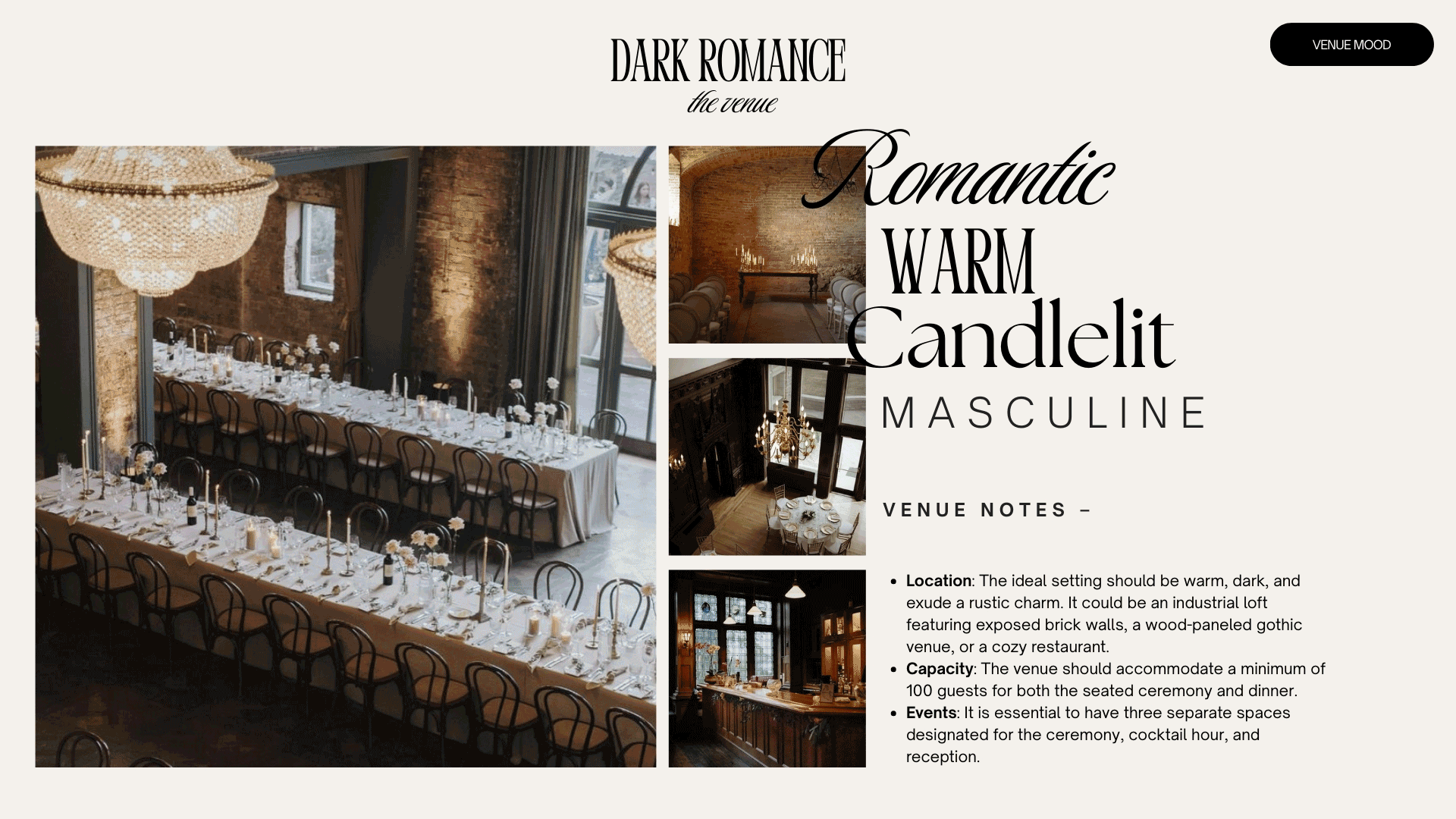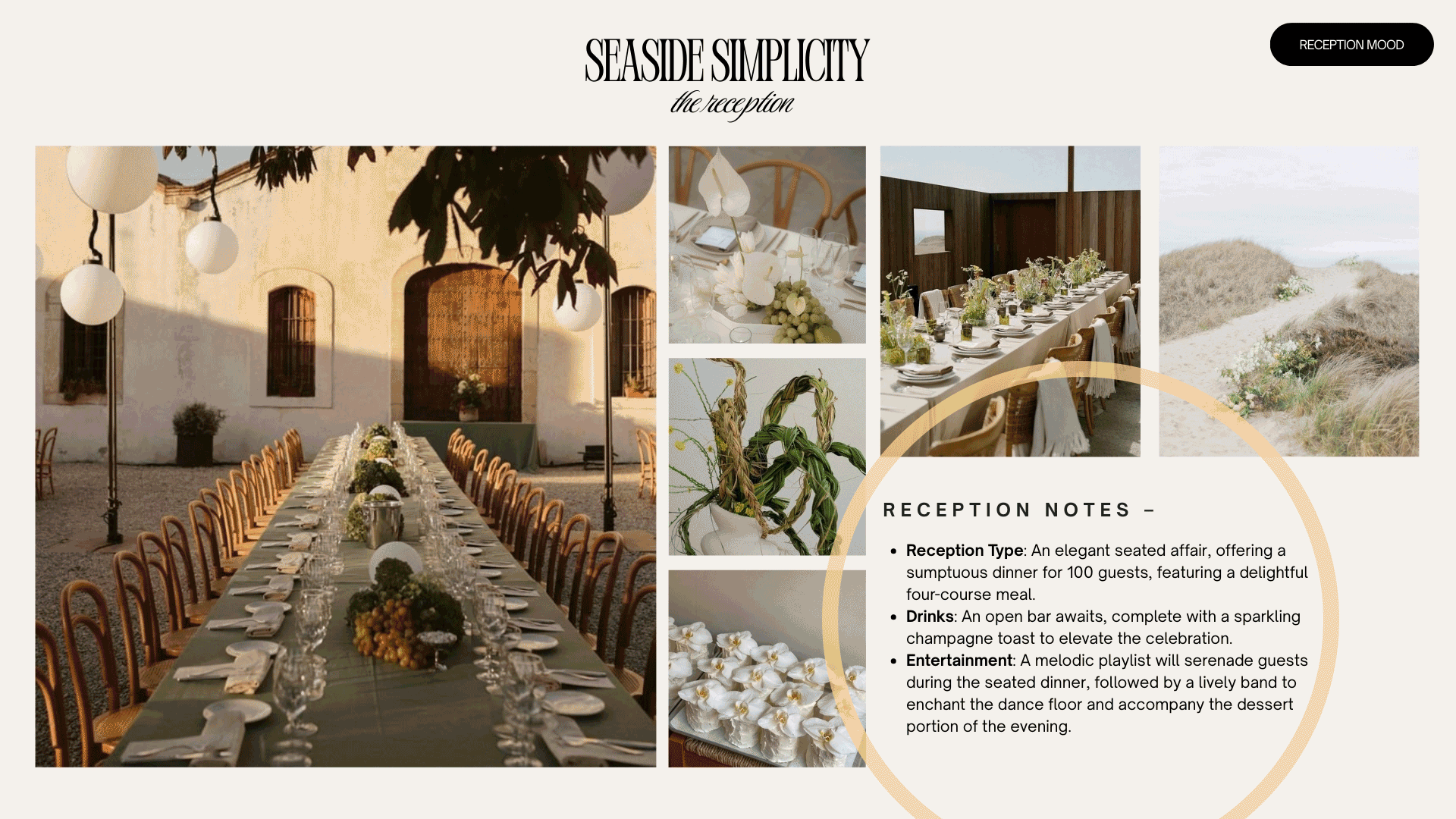The Elements of a Good Wedding Vendor Brief
Planning a wedding without a full-service planner? You’re not alone. That’s exactly why we created Mood & Marry—to give you beautifully designed tools that make communicating with your vendors easy, clear, and actually inspiring.
One of the most important tools in your planning toolkit? A well-crafted vendor brief.
Below, we’re breaking down what makes a good one—and how you can use our templates to create a clear, cohesive vision for your florist, venue, photographer, and beyond.
1. Big Picture Overview
Before diving into specifics, your vendor team needs to understand the story you’re telling. This is where your wedding moodboard and overall design vision come in. A strong brief includes:
A clear, defined aesthetic (e.g. modern minimal, garden romantic, moody editorial)
Key visual inspiration
Your color palette
Tone and texture notes (light and airy vs. rich and dramatic)
This helps your vendors immediately grasp the direction and set the right creative mindset.
2. Key Details (Without the Overwhelm)
A great vendor brief gives just enough information to be actionable—but not so much that it overwhelms. Focus on:
Date, venue, time of day
Guest count and layout needs
Any non-negotiables (e.g. must use white garden roses, no arches, prefer candles over string lights)
When you outline this upfront, vendors can quickly identify if they’re a good fit, propose solutions, and offer accurate quotes.
3. Contextual Visuals
Pinterest is great, but it’s often chaotic. A good brief pulls curated inspiration into context—so the florist knows which images are about bouquets and which ones are about table styling.
Our templates include:
Moodboard with image sections labeled by category
Visual pairings that help vendors see how it all works together
Clean formatting that makes it easy to scan
4. Clear Priorities
Vendors aren’t mind readers. Let them know what matters most:
Is the ceremony install the focus?
Do you care more about the tablescape than the cake table?
Is candlelight essential or a nice-to-have?
Mood & Marry vendor briefs include space for you to highlight priorities—helping you align your energy (and budget) with what matters.
5. Room for Flexibility
While the goal is clarity, the best briefs leave space for creativity. You want to give direction—but not micromanage. Vendors are creatives too, and your brief should serve as inspiration, not prescription.
Mood & Marry templates strike that balance by offering:
Open-ended notes sections
Visual guidance, not rigid layouts
Space for vendor feedback and suggestions
Final Takeaway
A good vendor brief gives your team the context, clarity, and confidence to bring your vision to life—without endless meetings, misunderstood emails, or expensive do-overs.
Mood & Marry templates were designed with this exact goal: to make wedding planning feel less like project management and more like creative direction.
Start with a template that matches your style, fill it in with your details, and hand it off with confidence.




